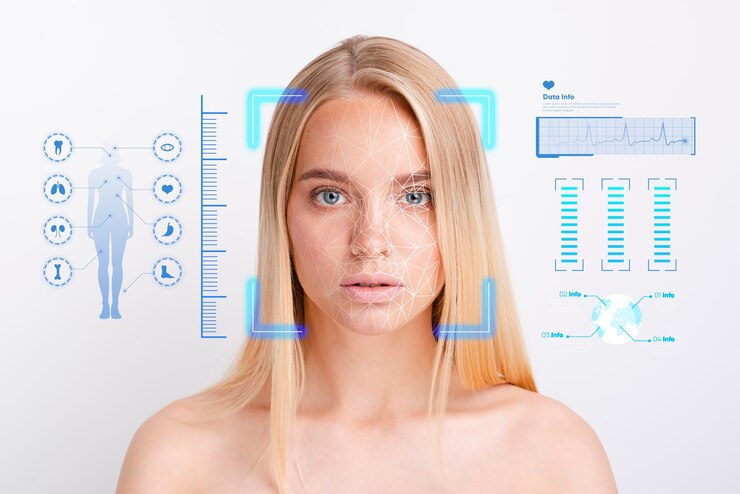Yes, generally considered Biometrics Safer than passwords due to their unique and inherent nature. Biometric authentication, such as fingerprint or facial recognition, offers a higher level of security as it involves individual physical characteristics that are difficult to replicate or steal.
With the increasing sophistication of cyber threats, many organizations are turning to biometric technology as a more secure alternative to traditional password-based systems. As a result, the use of biometrics is becoming more prevalent in various industries, including finance, healthcare, and government sectors.
However, it’s essential to carefully consider the potential challenges and limitations associated with biometric authentication, such as privacy concerns and technological vulnerabilities, in order to fully leverage its benefits.

Credit: www.freepik.com
Understanding The Risks Of Traditional Passwords
When it comes to password security, traditional passwords pose numerous risks. However, biometrics offer a safer alternative. Biometric authentication, such as fingerprint or facial recognition, provides a more secure and user-friendly method of accessing sensitive data compared to traditional passwords.
Understanding the Risks of Traditional Passwords
Password Vulnerabilities
Traditional passwords have long been the standard for securing digital accounts and information. However, password vulnerabilities are a growing concern in today’s rapidly evolving digital landscape. One of the most significant weaknesses of traditional passwords is their susceptibility to being compromised. The use of easily guessable or commonly used passwords, also known as “weak passwords,” poses a substantial threat to the security of online accounts. With the increasingly sophisticated methods used by cybercriminals to crack passwords, even seemingly strong passwords can be susceptible to exploitation.
Password Security Concerns
In addition to vulnerabilities stemming from weak password choices, there are broader password security concerns that warrant attention. Password reuse across multiple accounts is a common practice among users, and this can significantly heighten the risk of unauthorized access to sensitive information. Furthermore, the reliance on static passwords leaves accounts susceptible to brute force attacks and dictionary-based hacking attempts. As a result, the traditional password-based authentication method is inherently flawed and can no longer adequately meet the security needs of modern online environments.
While traditional passwords have long been the primary method for securing digital assets, they are increasingly recognized as inherently risky and vulnerable to exploitation. The advent of biometric authentication mechanisms offers a promising alternative, providing improved security and convenience for users. In the following sections, we will explore the potential for biometrics to enhance security while mitigating the weaknesses associated with traditional passwords.
Exploring Biometric Technology
Biometric technology offers a secure and convenient method for authentication, revolutionizing the way we protect our digital information. By using unique biological traits such as fingerprints, iris patterns, or facial recognition, biometrics provides a more reliable alternative to traditional password-based systems. In this section, we will delve into the definition, function, and various types of biometric authentication, shedding light on the advantages it offers over conventional password-based security.
Definition And Function Of Biometrics
Biometrics refers to the identification of individuals based on their unique biological characteristics. This technology functions by capturing, processing, and storing these biological features for subsequent verification or identification.
Types Of Biometric Authentication
There are several types of biometric authentication methods, each utilizing different physiological or behavioral characteristics for identification. These methods include:
- Fingerprint recognition
- Facial recognition
- Iris or retina scanning
- Voice recognition
- Hand geometry
- Behavioral biometrics (such as keystroke dynamics or gait recognition)
Accuracy And Reliability
When it comes to the debate over the safety of biometrics compared to traditional passwords, accuracy and reliability play a crucial role. Let’s delve deeper into how biometric authentication performance outweighs the advantages of traditional passwords.
Biometric Authentication Performance
Biometric authentication excels in accuracy and reliability due to its unique reliance on physical characteristics for identity verification. Unlike passwords, which can be forgotten, shared, or stolen, biometric identifiers such as fingerprint, iris, or facial recognition are inherently tied to the individual, making it highly reliable for secure access.
Advantages Over Traditional Passwords
The accuracy and reliability of biometric authentication offer several advantages over traditional passwords, as outlined below:
- Better Resistance to Unauthorized Access: Biometric data is personal and cannot easily be duplicated or stolen, reducing the risk of unauthorized access compared to passwords.
- Enhanced User Experience: Biometric authentication eliminates the need for users to memorize complex passwords, simplifying the authentication process and reducing the chances of forgotten credentials.
- Reduced Vulnerability to Cyber Threats: Biometric identifiers are less susceptible to hacking or phishing attacks, making them a more secure alternative to traditional passwords.
- Improved Security Compliance: The use of biometrics can aid organizations in meeting stringent security compliance standards, ensuring a higher level of data protection.
Security Concerns And Limitations
When it comes to biometrics versus passwords, there are security concerns and limitations that need to be carefully considered. Understanding the potential risks of biometric data and addressing privacy issues are crucial aspects in evaluating the overall security of biometrics as a form of authentication.
Potential Risks Of Biometric Data
Biometric data, being unique to each individual, brings about certain inherent risks. Storing this sensitive information in centralized databases creates a single point of failure. If this data is compromised, it can have serious consequences for individuals, leading to identity theft and privacy breaches. Additionally, there is potential for biometric data to be falsified or replicated, making it susceptible to fraud.
Addressing Privacy Issues
Privacy concerns arise when biometric data is collected and stored without clear consent and proper safeguards. Clear guidelines and regulations need to be in place to ensure that individuals have control over how their biometric information is used and shared. A transparent approach to the collection, storage, and use of biometric data is essential in mitigating privacy risks.
Are Biometrics Safer Than Passwords?
Biometrics and passwords are two common forms of authentication used to secure digital devices and accounts. As technology advances, the debate over which method is more secure has become increasingly relevant. This article aims to explore the question: Are Biometrics Safer Than Passwords?
The Effectiveness Of Biometric Authentication
Biometric authentication, which uses unique physical characteristics such as fingerprints, facial recognition, and iris scans, offers a strong level of security. This is primarily due to the fact that biometric data is much harder to forge or steal compared to traditional passwords. Biometric authentication also provides a convenient and efficient user experience, as it eliminates the need to remember complex passwords or worry about password theft. Additionally, biometric systems can provide real-time identification and verification, adding an extra layer of security to sensitive information and transactions.
The Downsides Of Relying Solely On Biometrics
While biometrics offer heightened security, they are not without limitations. One of the main drawbacks of relying solely on biometric authentication is the potential for false acceptance or rejection. Environmental factors such as poor lighting or changes in physical appearance can impact the accuracy of biometric systems. Furthermore, in the event of a security breach, it is almost impossible to change one’s biometric data, whereas passwords can be easily reset. Moreover, biometric data, once compromised, poses a higher risk as it is irreplaceable. Therefore, while biometric authentication has its advantages, it should be complemented by other security measures to ensure comprehensive protection.
The Future Of Authentication Methods
Hybrid Approaches To Security
In the rapidly evolving landscape of digital security, the traditional password-based authentication is increasingly being questioned for its vulnerability to hacks and breaches. As a result, hybrid approaches that combine the use of biometrics and passwords are emerging as a promising solution. This offers a more robust and secure authentication process by leveraging the unique physical characteristics of an individual in conjunction with traditional password methods.
Implementing Multi-factor Authentication
Multi-factor authentication (MFA) is another key aspect of the future of authentication methods. By combining two or more different factors for identity verification, MFA significantly enhances security. This can include a combination of biometrics (such as fingerprint or facial recognition), something the user knows (like a password or PIN), and something the user possesses (such as a smartphone or token). By implementing MFA, organizations can effectively strengthen their defense against unauthorized access and data breaches.
Frequently Asked Questions On Are Biometrics Safer Than Passwords
Are Biometrics Safer Than Passwords?
Biometrics are generally considered safer than passwords because they are unique to each individual, making it harder for unauthorized access. Biometric authentication also reduces the risk of hacking and identity theft as it requires physical identification. However, biometrics can still have vulnerabilities and should be used alongside strong password protection.
How Do Biometrics Enhance Security?
Biometrics enhance security by adding an extra layer of protection through unique biological traits such as fingerprints, facial recognition, or iris scans. This makes it harder for unauthorized individuals to gain access, reducing the risk of identity theft and unauthorized access to sensitive information.
What Are The Limitations Of Biometric Security?
While biometric security offers strong protection, it has limitations. False acceptance and rejection rates, potential privacy concerns, and the possibility of biometric data theft are important considerations. Additionally, biometric systems can be expensive to implement and maintain, making cost a potential limitation for some organizations.
Can Biometric Data Be Hacked Or Stolen?
Biometric data can be susceptible to hacking or theft, presenting a potential risk to user privacy and security. This emphasizes the need for robust encryption and protection measures to secure biometric databases and ensure the integrity of this sensitive information.
Careful consideration of security protocols is essential in safeguarding biometric data.
Conclusion
Biometrics offer a more secure and convenient authentication method than traditional passwords. With their unique physical attributes, individuals can access their devices and accounts with ease, reducing the risk of identity theft and unauthorized access. As technology continues to advance, biometric authentication is set to become the norm for ensuring the safety of personal information in the digital age.
